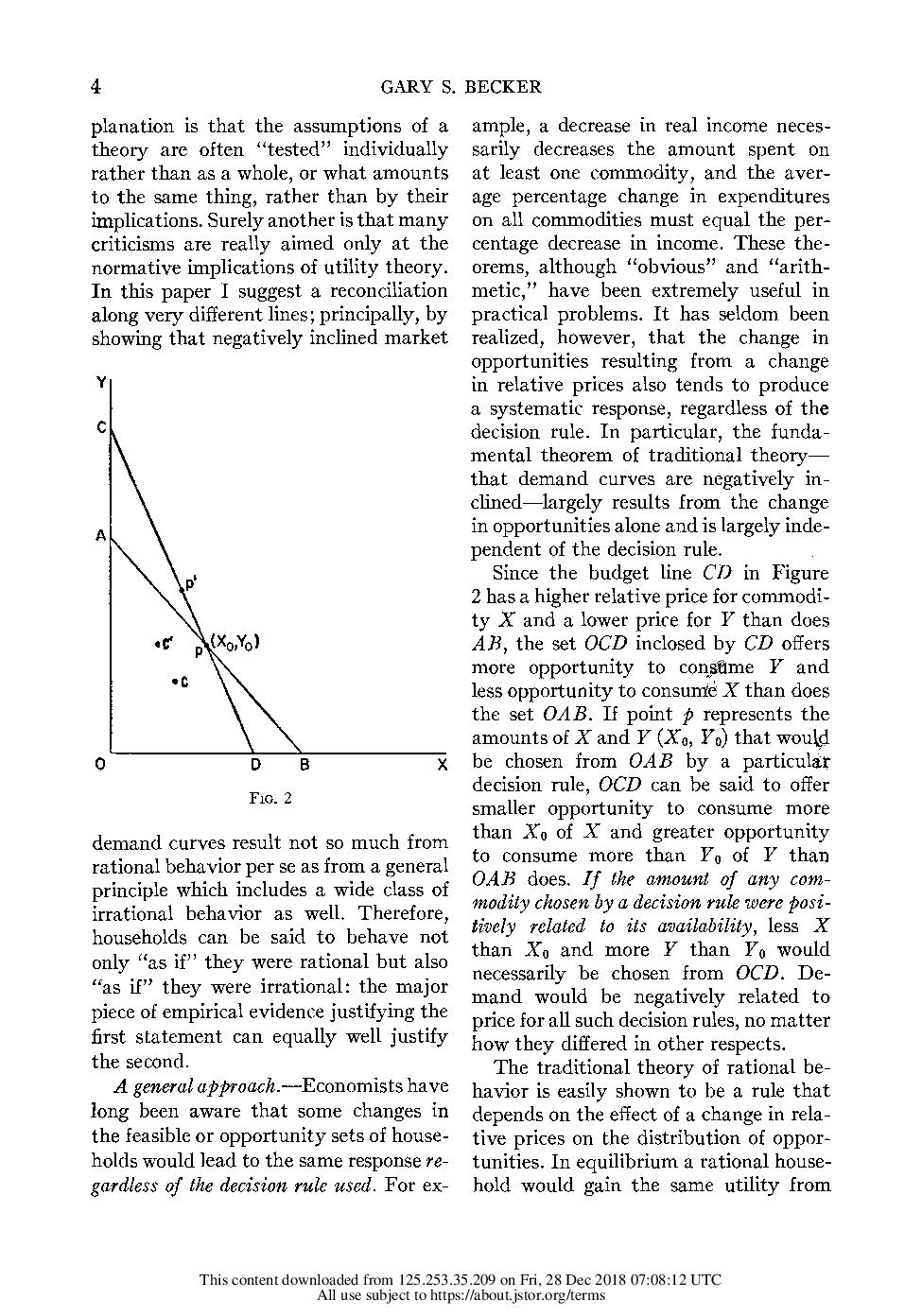1)What is the main idea behind the model?
2)How does the model work?
4 GARY S. BECKER planation is that the assumptions of a theory are often \"tested\" individually rather than as a whole, or what amounts to the same thing, rather than by their implications. Surely another is that many criticisms are really aimed only at the normative implications of utility theory. In this paper I suggest a reconciliation along very different lines; principally, by showing that negatively inclined market Y 0 D B X F10. 2 demand curves result not so much from rational behavior per se as from a general principle which includes a wide class of irrational behavior as well. Therefore, households can be said to behave not only \"as if\" they were rational but also \"as if\" they were irrational: the major piece of empirical evidence justifying the rst statement can equally well justify the second. A general opproock.-Economists have long been aware that some changes in the feasible or opportunity sets of house- holds would lead to the same response re gardless of the decision mic mod. For ex ample, a decrease in real income neces- sarily decreases the amount spent on at least one commodity, and the aver- age percentage change in expenditures on all commodities must equal the per- centage decrease in income. These the- orems, although \"obvious\" and \"arith- metic,\" have been extremely useful in practical problems. It has seldom been realized, however, that the change in opportunities resulting from a change in relative prices also tends to produce a systematic response, regardless of the decision rule. In particular, the funda mental theorem of traditional theory that demand curves are negatively in clinedlargely results from the change in opportunities alone and is largely inde- pendent of the decision rule. . Since the budget line CD in Figure 2 has a higher relative price for commodi- ty X and a lower price for Y than does AB, the set OCD inclosed by CD offers more opportunity to const'lme Y and less opportunity to consume X than does the set OAB. If point 3? represents the amounts of X and Y (X9, Y9) that would be chosen from OAB by a particular decision rule, 0CD can be said to offer smaller Opportunity to consume more than X0 of X and greater opportunity to consume more than 170 of Y than OAB does. If like amonnt of any com modity chosen by o decision rule were posi- tioeiy related to its availability, less X than X0 and more Y than Yo would necessarily be chosen from 0CD. De- mand would be negatively related to price for all such decision rules, no matter how they differed in other respects. The traditional theory of rational be havior is easily shown to be a rule that depends on the effect of a change in rela tive prices on the distribution of oppor tunities. In equilibrium a rational house- hold would gain the same utility from This content downloaded from l25.253.35 .209 on Fri, 28 Dec 2018 07:08:12 UTC All use subject to https:f!about.jstor.orgr'lerms







